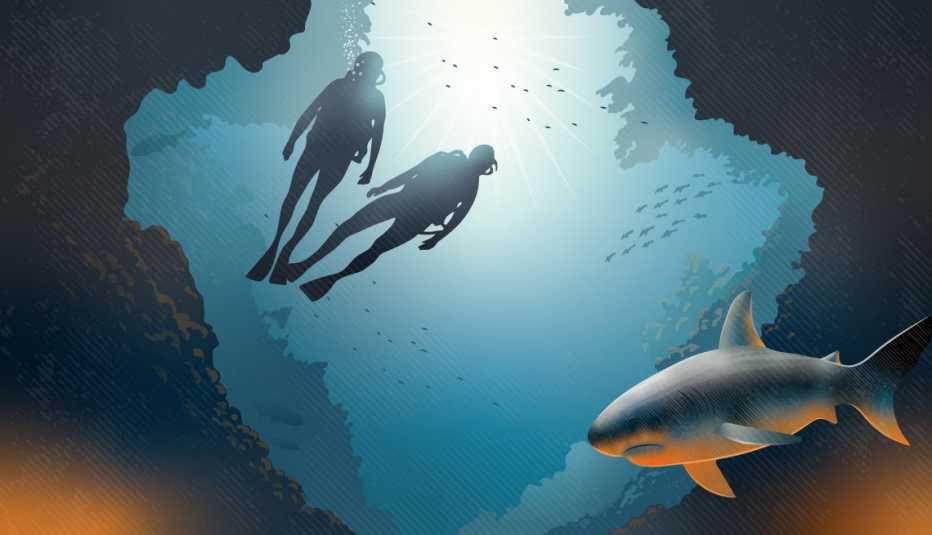Staying Fit


I’m gripping the life ring as hard as I can with one hand, gasping for air, grateful that the ocean salt spray is at least partially disguising the tears running down my face. My heavy dive gear feels like it’s trying to pull me back under as I fiddle with my mask, which I had failed to replace underwater during my certification test.
“Are you OK? Do you want to go in?” my dive instructor, Carol, asks for the third time. It’s clear what she thinks I should do.
“No,” I gasp, knowing I’m supposed to say yes, and that by asking her to continue the dive, I’m putting her on the spot. “I don’t want to give up.”
She looks at me sympathetically, but I can see the doubt and worry in her eyes. “You can always try again another time,” she says.
I’m on the fourth and final dive of my PADI (Professional Association of Diving Instructors) open water certification test, which — should I complete it — will allow me to dive on my own without a professional guide (but with a buddy) to depths of up to 60 feet. Having taken my initial pool training at a dive center near my home in northern California, I’ve come to the south shore of Kauai, Hawaii, to do my open water tests in warmer water.
Despite nerves that kept me up most of the night, all had gone reasonably well up to this point. But then came underwater mask removal, one of the tasks I’d dreaded most, and I’d inhaled water after I couldn’t clear my flooded mask. In a panic, I shot straight to the surface, 40 feet above, failing to regulate my ascent or make the required three- to five-minute safety stop 15 feet below the surface to prevent decompression illness. Most instructors would fail me on the spot.
“Let’s take a five-minute rest and talk about it,” Carol says.
An Unlikely Diver
The truth is, I wasn’t supposed to be here in the first place. I suffer from both generalized anxiety disorder and panic attacks, which can occur at any time, causing my heart to race and leaving me weak, dizzy, trembling and unable to think straight. Not exactly a state you want to find yourself in when you’re deep underwater.



































































You Might Also Like
For the Love of Canada
A childhood camping trip ignited a lifelong passion for our northern neighborA New Year’s Eve to Remember
A surprise visit and the kindness of a stranger make for a memorable nightMore Members Only Access
Watch documentaries and tutorials, take quizzes, read interviews and much more exclusively for members